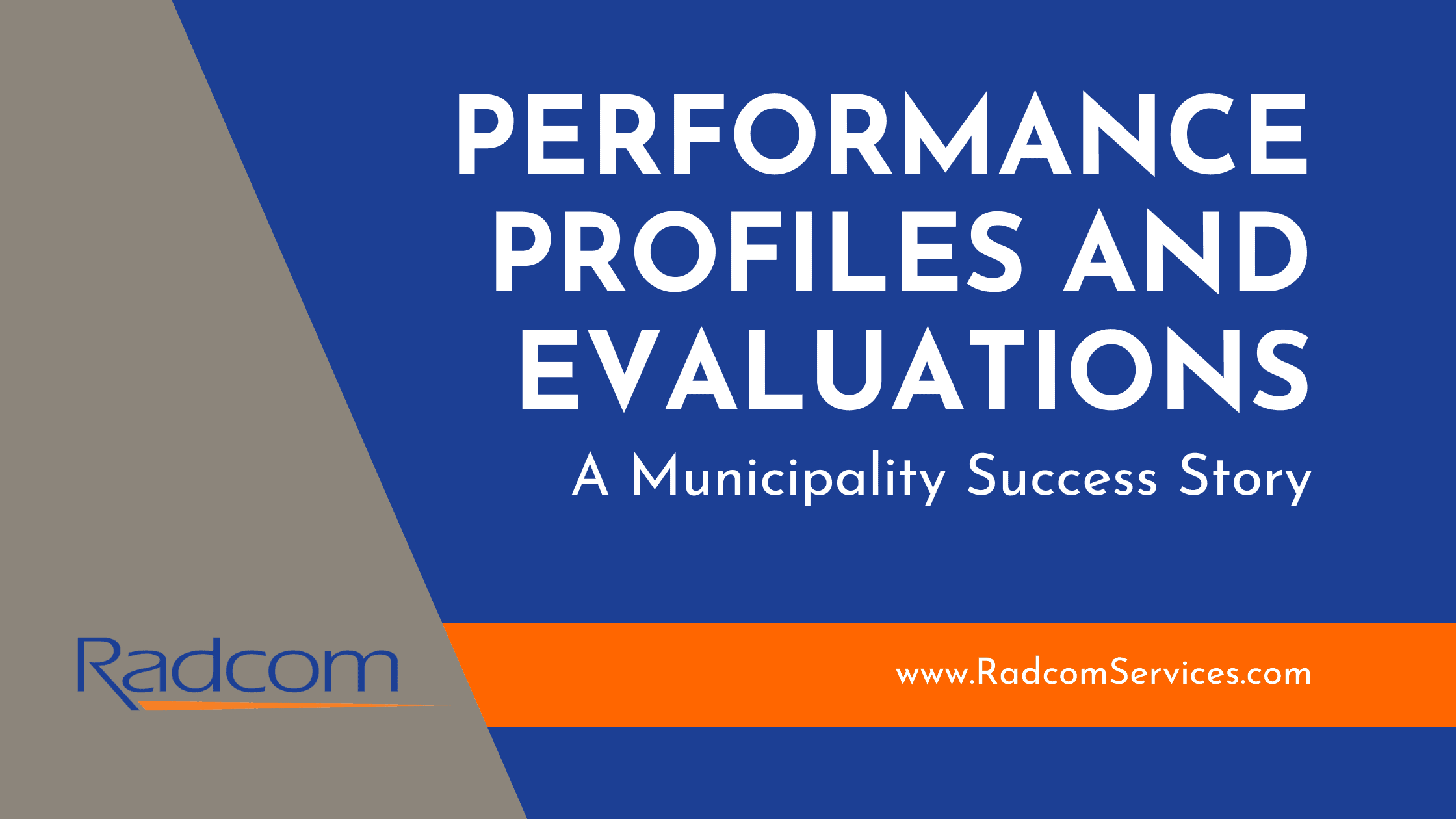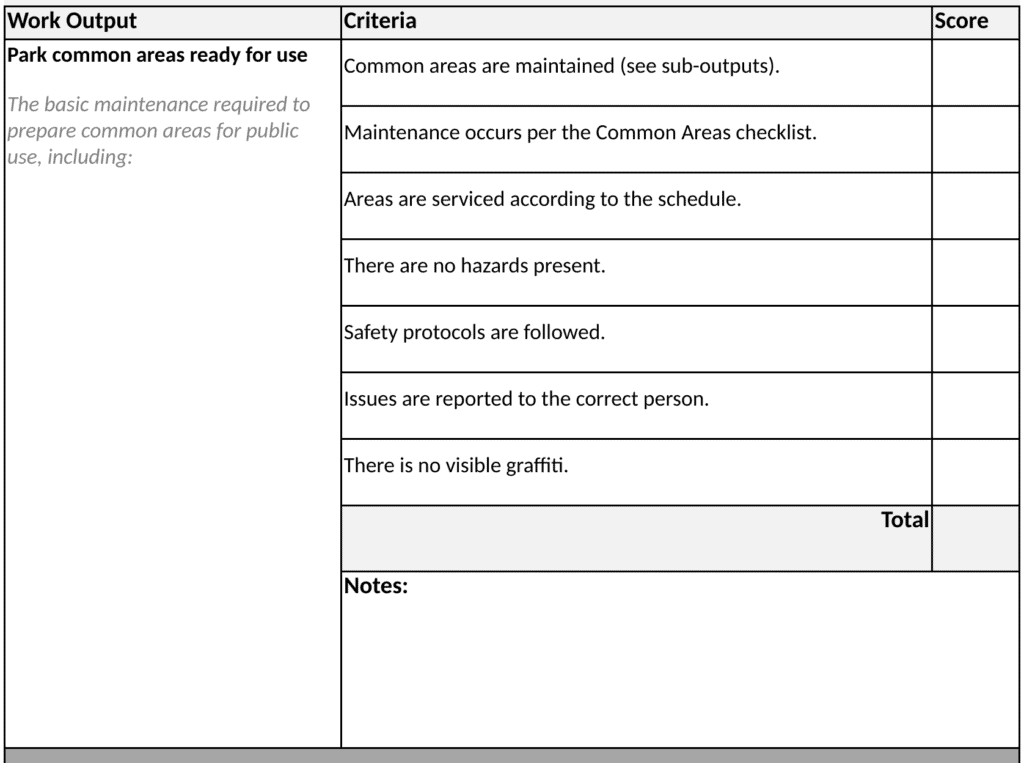
The Background
Radcom was approached by a growing municipality with union workers. The city recognized it needed to add classifications for its employees in order to differentiate performance and skill levels, as well as pay structure. Because of this, it wanted to standardize job roles and create a defined career progression within those roles as they existed in four different departments: Water, Wastewater, Service, and Parks and Recreation. All workers, regardless of skill level, were all classified as technicians. According to the union, decisions on who got to advance above the initial technician level to a skilled technician and then a crew leader could not be left to subjectivity. This needed to be done with objectivity and repeatability.
The Recommendation
To accomplish this, Radcom recommended creating a performance-based framework that would include performance profiles for each of the three newly-classified roles in each of the four departments. With the framework in place, they would be able to hire and promote employees based on their ability to complete job-specific products of work, or accomplishments, to specified required standards.
As a second phase, Radcom also recommended creating evaluation tools that supervisors could use to determine if employees were performing below, at, or above minimum requirements. This approach would be impartial and transparent, using the same assessment and evaluation process for everyone.
The city saw the value in Radcom’s proposed solutions and assigned a project manager to coordinate the work on their end and act as a primary point of contact. Management teams for each department were available to Radcom throughout this engagement.

Phase 1: Performance Profiles
To get started, Radcom first needed to determine all the accomplishments expected of each role (technician, tech II, and crew lead) for each department. We held a meeting with department management to go over what each role will be expected to produce. The accomplishments for each of four departments were determined, organized, and verified by management.
Then, we held a series of meetings to determine the standards each accomplishment needs to meet to be considered successful. These standards centered around:
- Protocols that need to be followed.
- Time durations in which the accomplishment needs to be completed.
- Identified recipients who must receive the accomplishment when it is completed.
- Various identifiers that are evaluated to ensure the accomplishment meets expected quality.
During these meetings, the team also identified key tasks that need to occur, as well as existing resources that are used to complete the accomplishments to standard. This included things like checklists, guidebooks, standard operating procedures, logs, and regulations, all of which were useful in determining the full scope of each job role.

The team then discussed what differentiates a technician from a skilled technician, as both job roles had a near-identical set of accomplishments. The key difference ended up being determined by expectations around supervisory skills. The crew leader job role had its own set of accomplishments, as well as a supervisory skills component. In the end, these performance profiles included:
- The purpose of the role.
- Its work products.
- Their standards of excellence.
- Key tasks necessary to produce a successful work product.
- Requirements and performance expectations around supervisory skills for the role.
Now the city has detailed profiles for each role that provide clear expectations around performance. By looking at the performance profile for the role they are looking to move into, an employee can also find clear expectations for what development they need to advance to another role.
Phase 2: Evaluations
In addition to the profiles, the team created evaluation checklists for each role within each department. These checklists are used to score the performer on each standard for each accomplishment and supervisory skill expected of them. A rubric provides guidelines on scoring to ensure a uniform evaluation for each performer. The manager observes and scores the performer’s accomplishments. For example, if one accomplishment of the performer is “a building ready for public use,” management observes a building the performer has deemed ready for public use. They base their evaluation on the degree to which that building meets the standards in the evaluation checklist.

After implementing the new system of evaluation and expectations provided by the new performance profiles, it became easy to identify those staff members who should be promoted to the skilled technician and crew leader roles in an unbiased, repeatable process.
The city was thrilled with the results of this process, and all existing employees have been placed in one of the three defined roles. Evaluations and testing are now used for continuous performance improvement and promoting employees in the future.
How Can We Help You?
Are you thinking about adding more training to improve results from your employees? Training alone might not be the answer. Consider a Snapshot Performance Analysis to discover the best path to fix your organization’s performance problems.


